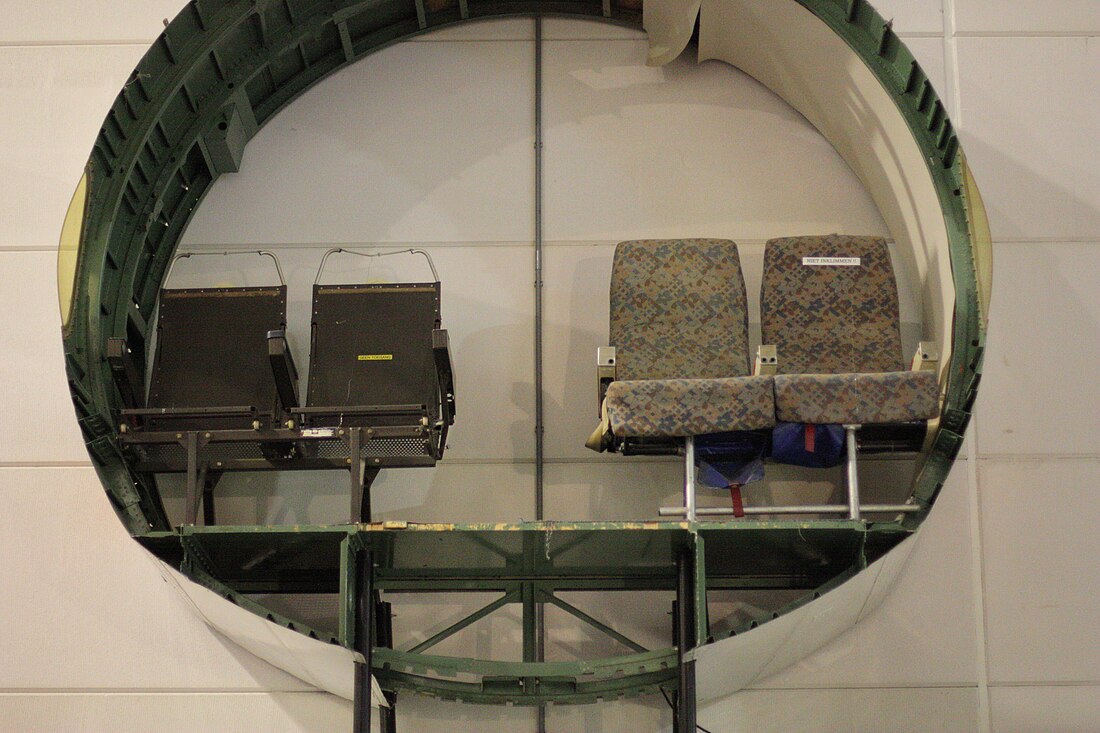Top Qs
Timeline
Chat
Perspective
Narrow-body aircraft
Airliner with a single aisle From Wikipedia, the free encyclopedia
Remove ads
A narrow-body aircraft or single-aisle aircraft is an airliner arranged along a single aisle, permitting up to 6-abreast seating in a cabin less than 4 metres (13 ft) in width. In contrast, a wide-body aircraft is a larger airliner usually configured with multiple aisles and a fuselage diameter of more than 5 metres (16 ft), allowing at least seven-abreast seating and often more travel classes.




Remove ads
Market
Summarize
Perspective
Historically, beginning in the late 1960s and continuing through the 1990s, twin engine narrow-body aircraft, such as the Boeing 737 Classic, McDonnell-Douglas MD-80 and Airbus A320 were primarily employed in short to medium-haul markets requiring neither the range nor the passenger-carrying capacity of that period's wide-body aircraft.[1][failed verification]
The re-engined Boeing 737 MAX and Airbus A320neo jets offer 500 miles more range, allowing them to operate the 3,000 miles transatlantic flights between the eastern U.S. and Western Europe, previously dominated by wide-body aircraft. Norwegian Air Shuttle, JetBlue and TAP Portugal will open up direct routes bypassing airline hubs for lower fares between cheaper, smaller airports. The Boeing 737NG 3,300-mile range is insufficient for fully laden operations and operates at reduced capacity like the Airbus A318, while the Airbus A321LR could replace the less fuel efficient Boeing 757s used since their production ended in 2004.[2] Boeing will face competition and pricing pressure from the Embraer E-Jet E2 family, Airbus A220 (formerly Bombardier CSeries) and Comac C919.[3]
Between 2016 and 2035, FlightGlobal expects 26,860 single-aisles to be delivered for almost $1380 billion, 45% Airbus A320 family ceo and neo and 43% Boeing 737 NG and max.[4] By June 2018, there were 10,572 Airbus A320neo and Boeing 737 MAX orders: 6,068 Airbuses (57%, 2,295 with CFMs, 1,623 with PWs and 2,150 with not yet decided engines) and 4,504 Boeings (43%); 3,446 in Asia-Pacific (33%), 2,349 in Europe (22%), 1,926 in North America (18%), 912 in Latin America (9%), 654 in Middle East (6%), 72 in Africa (1%) and 1,213 not yet bounded (11%).[5]
Many airlines have shown interest in the Airbus A321LR or its A321XLR derivative, and other extended-range models, for thin transatlantic and Asia-Pacific routes.[6]
Remove ads
Examples
Six-abreast cabin
Five-abreast cabin
Four-abreast cabin
Three-abreast cabin
Two-abreast cabin
Remove ads
Image gallery
- Two-abreast Beech 1900
- Three-abreast Saab 340
- Four-abreast Embraer E190
- Five-abreast Boeing 717
- Six-abreast Airbus A320
See also
Notes
References
Wikiwand - on
Seamless Wikipedia browsing. On steroids.
Remove ads





